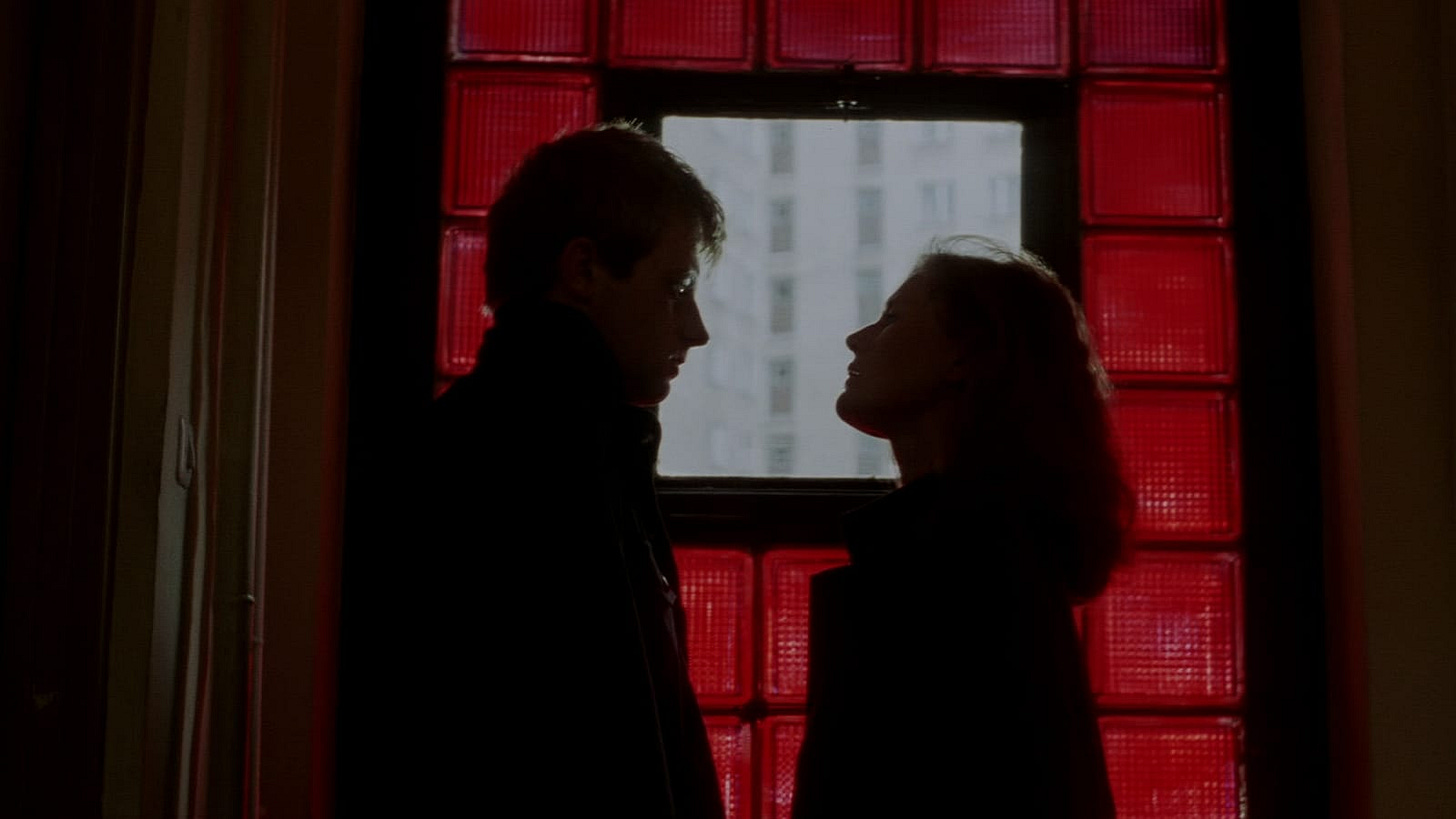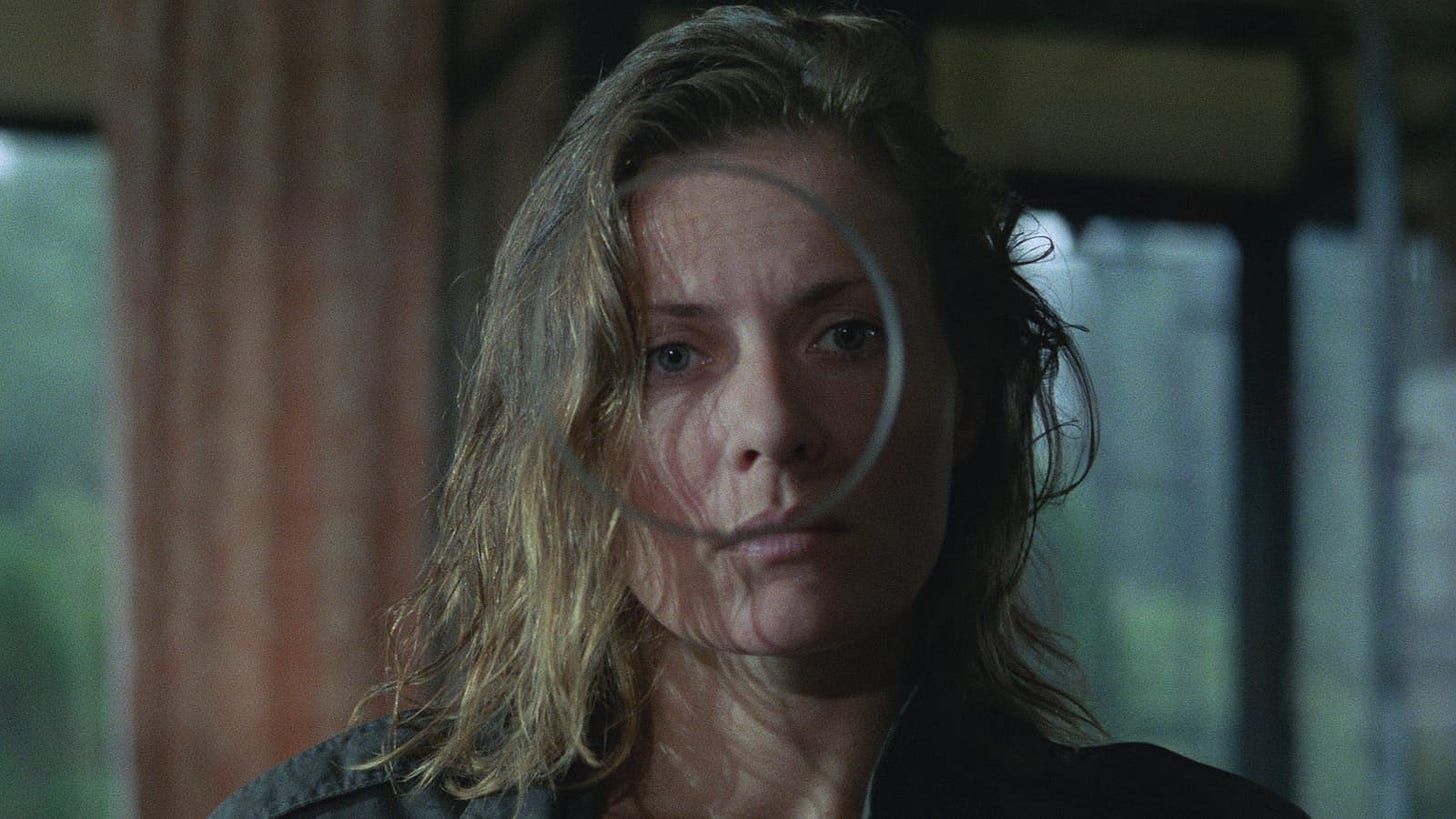The FFFEYIBA Project—1988
“It’s an obsession of mine: that different people in different places are thinking the same thing but for different reasons. I try to make films which connect people.”
For a reminder on the purpose (and rules) of the project, see this post.
HM #1: Eight Men Out
John Sayles is fascinating. He graduated from Williams College with a B.A. in psychology, worked a series of blue-collar jobs in Boston while writing short stories for The Atlantic, wrote for Roger Corman, won a pair of O. Henry Awards, and received a MacArthur Fellowship. He’s a legendary script doctor, doing his best to salvage films like The Fugitive, Apollo 13, Mimic, The Spiderwick Chronicles, The Quick and the Dead, the unreleased Jurassic Park IV, and Piranha 3-D—that last one’s particularly fitting, since he wrote the original script for Corman. And the personal film projects he funds through these activities are nothing like the movies he’s working to salvage. Instead of churning out big blockbusters or genre films with a built-in audience, he’s making small, beautifully-written, and beautifully acted films. And that’s exactly what Eight Men Out is: a fantastic story, made with wit and grace by someone who clearly cares about the telling. The baseball sequences are not particularly realistic—a problem common to nearly all sports films—but the human elements are fantastic.
HM #2: The Vanishing
This movie still freaks me out when I think about it, though it’s been years since I saw it for the first (and only!) time. It’s a cinematic “ear-worm;” once you’ve got it in your head, it’s almost impossible to extract. Rotten Tomatoes describes it as “a clinical, maddening descent into the mind of a serial killer and a slowly unraveling hero, culminating with one of the scariest endings of all time,” and that probably doesn’t quite capture just how skin-crawling the ending actually is. This was the Netherlands submission to the Academy for Best Foreign Language Film, but it was disqualified when the Academy determined there was too much French dialogue for it to represent the Netherlands. (The Dutch stuck to their guns, and refused to send another, leaving them without an entry for the first time since 1972. ) HM for the HM: Sluizer was hired to remake the film in English, some five years later—an approach I much prefer to Hollywood bringing in their own directors to remake (and, often, to butcher) a successful foreign film. In this case, the result is perfectly adequate, but lacks the existential horror of the original. I suspect it’s because Jeff Bridges, Kiefer Sutherland, and Sandra Bullock are all too recognizable to give audiences the “faceless everyman” vibe that will leave you looking over you shoulder for weeks after watching this one.
HM #3: Grave of the Fireflies
The ultimate gut-punch film, this one’s a stunning reminder that Ghibli was always more than just Miyazaki. While Isao Takahata always came across as a bit of a “silent partner,” that had more to do with the international success of Miyazaki’s work than the quality of Takahata’s. Anyone who sees this (and The Tale of the Princess Kaguya) will realize, Ghibli housed two geniuses, not one. And anyone who reads a bit of the backstory behind Miyazaki’s latest, The Boy and the Heron, will realize how important Takahata’s advice and opinion were to Miyazaki. That realization doesn’t make the film any less relentless, but it does help to explain why it’s so successful at doing what it’s trying to do. (And the stuff about how the relationship between Miyazaki and Takahata was meant to be worked into the tapestry of Heron is really touching. Gives some nice contrast to Miyazaki’s famous prickliness.)
And now, on to ‘88!
1988’s Selection: Dekalog, by Krzysztof Kieslowski
OK, so this is cheating, technically. It’s a TV series, not a film. And if you look at IMDB, it actually says most of the show’s episodes were aired in 1990. And it won a BAFTA in 1991. But the two films that were developed out of the TV show—A Short Film About Killing and A Short Film About Love—were both released in 1988. And perhaps most tellingly of all, Criterion (which has the series as Spine #837) lists its release year as 1988. So I’m going to go with that. Besides, this is my series, and I’m going to play with my rules:
This masterwork by Krzysztof Kieślowski is one of the twentieth century’s greatest achievements in visual storytelling. Originally made for Polish television, Dekalog focuses on the residents of a housing complex in late-Communist Poland, whose lives become subtly intertwined as they face emotional dilemmas that are at once deeply personal and universally human. Its ten hour-long films, drawing from the Ten Commandments for thematic inspiration and an overarching structure, grapple deftly with complex moral and existential questions concerning life, death, love, hate, truth, and the passage of time. Shot by nine different cinematographers, with stirring music by Zbigniew Preisner and compelling performances from established and unknown actors alike, Dekalog arrestingly explores the unknowable forces that shape our lives.
Looking back at the last few posts, I can see that I’m probably giving off a bit of an “European Arthouse” vibe. Offret and Babette’s Feast occupy a very particular space in the cinematic universe, and this week’s selection certainly falls closer to them (and to Tree of Wooden Clogs and Stalker) than it does to Silverado or This is Spinal Tap.
It’s not that I’m snooty—not just that, anyway. It’s that there’s something all of these “Favorites” have in common: a slow, meditative mood, paired with characters that often seem simple on the surface, but which reveal rich, rewarding, complex realities once you start to peel back the “obvious” explanations. With Offret, its the philosophical density; with Babette, the metaphorical richness; with this film (as with all Kieślowski), it’s the vibrancy of the connections that lie just beneath the surface. There are other directors who take on the “hyperlink” film, but no one does it like Kieślowski, whose work on tying the themes and characters of “The Three Colors” together is unmatched. I’d characterize it as “seemingly simple, but really, just subtle.”
Dekalog V is probably my favorite of these, and is also the most famous, given that the feature-length film that grew from it—A Short Film About Killing—is recognized by many for its artistic (and political) impact. If you’re only planning to watch one, make it Dekalog V. But also, don’t watch just one; that’s madness. If you watch any single episode of the series and are not interested in the rest, I’m not sure what to tell you.
…except that the rest of my series is probably going to be problematic for you, as well.
A friend of mine recently noted that I spend a lot of time in these posts talking about film music. Guilty as charged; it’s just how I’m wired. Since I’ve been little, music has been the only sure-fire instigator of memories. I don’t remember much from when I was young, typically, but if someone puts on a piece of music that was playing during a particular event from my childhood, the memory of that event comes flooding back. It’s somewhat eerie, to be honest. (When I’m playing “The Soundtrack Game” with my kids on most Friday nights—a game where the person who can most rapidly guess the movie score they’re hearing gets a point—and I can’t recognize a film, I usually just have to wait, and a recognizable image eventually comes to mind, dragged back into my consciousness by the mysterious threads that bind my visual and auditory memories together to tightly.)
I’m sure that’s why music holds such a prominent place in my cinematic experiencing. And so, in keeping with my usual tendencies—I can’t change who I am/the color of my stripes, right?—here’s a reminder the Zbigniew Preisner’s work on this series (and on everything he did with Kieślowski, including the wrenching “Requiem For My Friend”, written to commemorate Kieślowski’s unexpected passing) is absolutely essential listening. And gosh, does it bring the memories of particular moments (and particular scenes) from Kieślowski’s works flooding back into my mind’s eye, as erstwhile mentioned. (And speaking of eyes, his colors are just amazing, as well.)
Here’s an insightful bit from a Criterion essay on Preisner’s “Three Colors” scores:
There is something spiritual, even liturgical about Preisner’s scores, though God is never mentioned by name in the trilogy. “All my films have a metaphysical or spiritual dimension,” the director said in an interview given fourteen months before he died of a heart attack in 1996 at the age of fifty-four. “But really, it’s not so special: every person’s life comprises those things, to some degree.” The magic of Kieślowski’s cinema lies in the way he suffuses that “not so special”—the quotidian fragments of an ordinary life—with deep poetry, like a white sugar cube slowly dissolving in a cup of coffee. These films frequently hold on close-ups of mundane details, and Preisner works to highlight the sacred meaning of these images.








